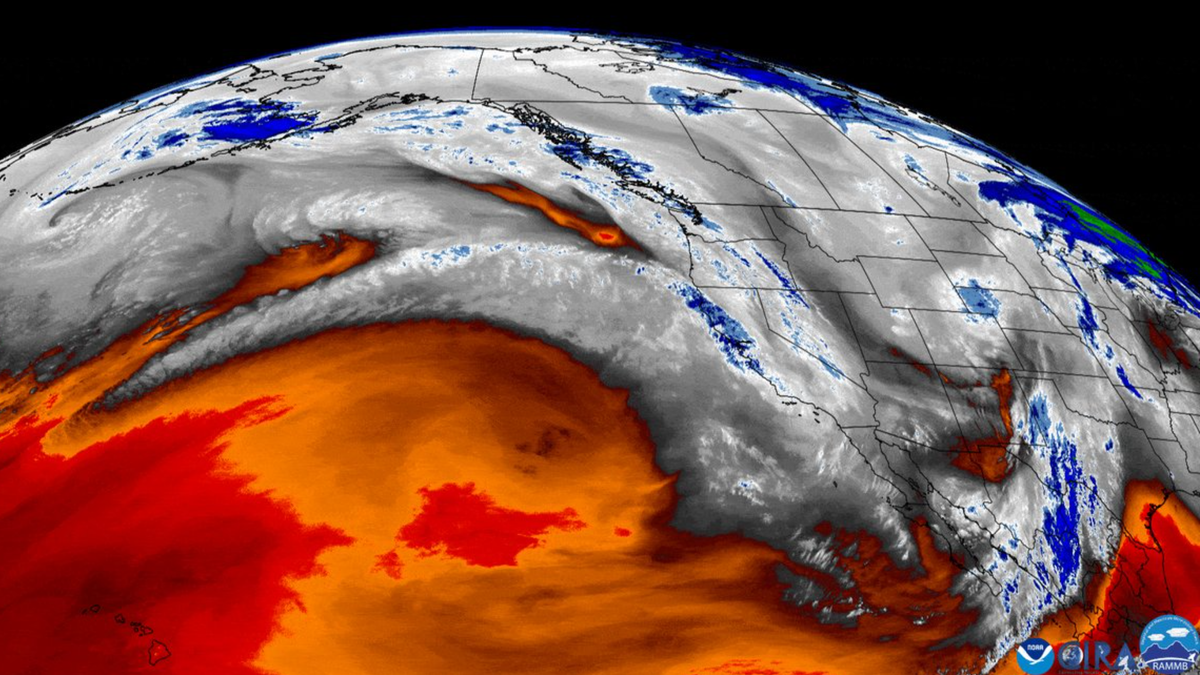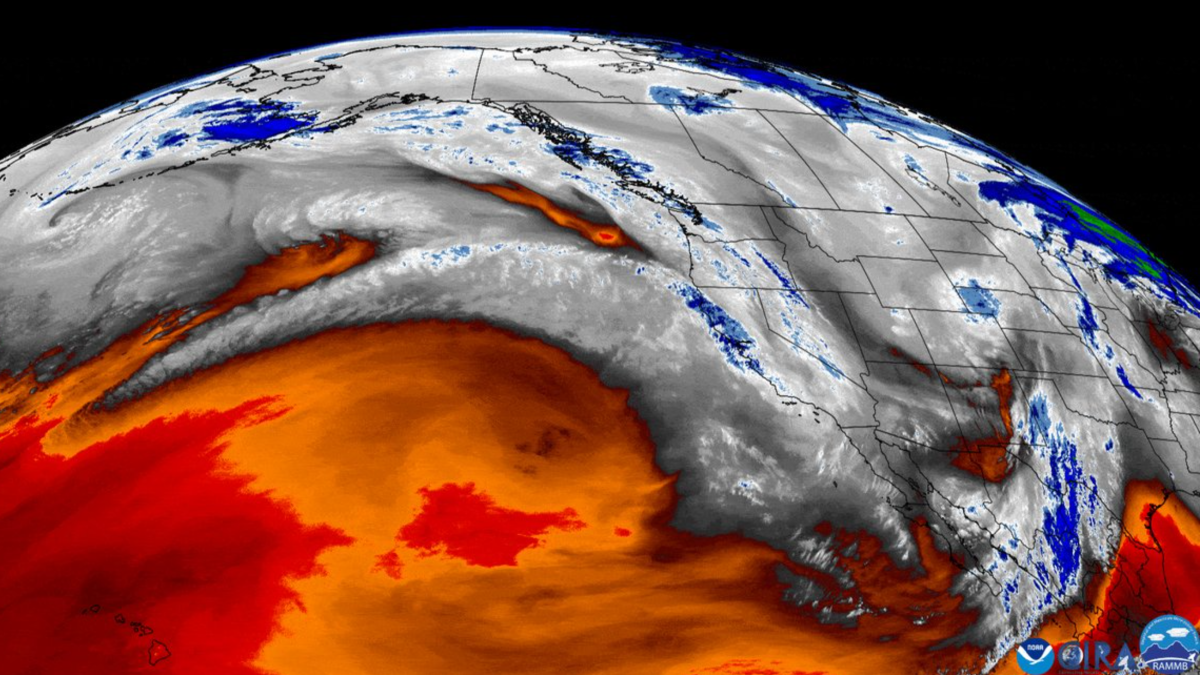
An “atmospheric river” is dumping a “pineapple express” upon the U.S. west coast, but no fruits are involved in this process.
Heavy rain and snow are visible in Earth-gazing satellites on Thursday (Dec. 29) gazing at the U.S. west coast, including several in the fleet of the National Oceanic and Atmospheric Administration (NOAA).
Much of California is now under flood watch after facing severe droughts and wildfires through 2022, NOAA said in a tweet (opens in new tab).
The state is now under an “atmospheric river”, which is a thin region of the atmosphere that ship water vapor outside of the tropics, NOAA website materials (opens in new tab) add. And some of those effects include exports from Hawai’i.
Related: Satellite sees deadly blizzard and ‘bomb cyclone’ blanket the US (photos)
It’s a stormy start to the morning in the western U.S. Water vapor imagery from @NOAA’s #GOESWest is showing a Pacific storm spinning southwest of Alaska while a plume of atmospheric moisture streams into the West Coast. Flood Watches are in effect for much of California. #CAwx pic.twitter.com/UOw84dSD9xDecember 29, 2022
This 48-hour loop of Total Precipitable Water (TPW) maps #AtmosphericRiver moisture sweeping down the entire west coast. Note the #PineappleExpress branch flowing from Hawaii. This classic winter weather pattern bringing drought relief to the southwest is good news for everyone. pic.twitter.com/N88ujk7rmADecember 28, 2022
An atmospheric river is bringing an onslaught of heavy rain and snow to much of the U.S. West Coast. But what is an atmospheric river? @NOAA explains: https://t.co/n5SIdFilCS For the latest weather forecasts, warnings, and advisories, follow @NWS pic.twitter.com/hH3CSnPtnmDecember 28, 2022
The “Pineapple Express,” NOAA officials said, is a form of atmospheric river that brings moistures from tropical regions near Hawai’i to the U.S. West Coast, a distance of some 3,000 miles (4,800 kilometers).
“Not all atmospheric rivers cause damage; most are weak systems that often provide beneficial rain or snow that is crucial to the water supply,” NOAA officials added. “Atmospheric rivers are a key feature in the global water cycle and are closely tied to both water supply and flood risks — particularly in the western United States.”
This time, however, the National Weather Service has some travel advisories for local residents who may be facing flood conditions, along with storm watches.
Good morning #BayArea and #CentralCoast from your day shift at the NWS forecast office.Got a deep tropical moisture tap setup to take aim at our region on #NYE. Plan ahead, add extra time to travel, stay home if you don’t need to go out.#cawx pic.twitter.com/ZfqZgKxcbWDecember 29, 2022
Active storm track continues for the West. Check out today’s satellite. #idwx #orwx #cawx pic.twitter.com/MIjFB8jxmKDecember 29, 2022
Both NOAA and NASA have a fleet of Earth-gazing satellites constantly keeping a watch on the planet for weather forecasts, disaster response and long-term climate monitoring.
The information gained from the fleet can be useful in producing local forecasts. For example, after atmospheric rivers are spotted, NOAA can offer flood warnings to potentially affected regions as far as a week in advance, the agency said.
Elizabeth Howell is the co-author of “Why Am I Taller (opens in new tab)?” (ECW Press, 2022; with Canadian astronaut Dave Williams), a book about space medicine. Follow her on Twitter @howellspace (opens in new tab). Follow us on Twitter @Spacedotcom (opens in new tab) or Facebook (opens in new tab).



